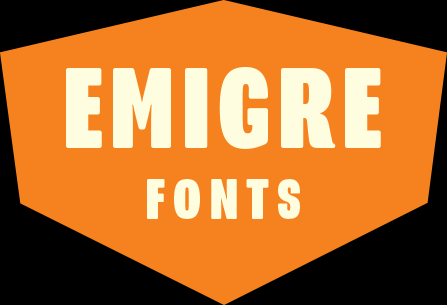An Interview with Berton Hasebe
By Rudy VanderLans
This interview was conducted in May 2011, shortly after Hasebe finished work on the Alda typeface.
Rudy Vanderlans: Moving to Holland for a year to study in the master program in type design at the KABK is quite an investment of time, creative effort, and perhaps money. Type design isn’t exactly a profession that offers a lot of career opportunities. It’s a fairly small world. What made you decide to do this, and was it worth the effort?
Berton Hasebe: I was fortunate to be able to take classes in type design while I was an undergrad at Otis, and I quickly learned the depth of type design as a discipline. Looking up to the teachers and students of Type and Media, I felt that a year in the program would be the perfect amount of time for me to concentrate on type design and be around people I admired.
When I applied to the program, my interest in type design supplemented my work as a graphic designer. The idea of creating a typeface for my own exclusive use appealed to me just as much as the idea of designing a typeface for retail sale. I didn’t enter the course expecting to design type full time after graduating, so I never really thought about the career opportunities. My intent was to learn as much as I possibly could and be a part of this community, and I consider myself fortunate to have gone through this experience.
RvdL: Gerrit Noordzij, who was the director of the writing and lettering program at the KABK for 30 years, is probably one of Holland’s best known type designers, educators and theoriticians. His teaching, in a nutshell, was based on the idea that most printing typefaces have their roots in handwriting created either with the broad nipped pen or the pointed pen. Taking classes from Noordzij meant hours of hand writing using these two tools in order to learn how type is constructed. The master program at KABK was started in 2002 after Noordzij had retired from teaching. How aware were you of his heritage, and how much of his influence is still felt in the program?
BH: I was aware of Noordzij’s teaching before attending Type and Media, mainly through reading The Stroke and Letterletter. His influence is still felt in the program as many of my teachers were taught by him. However the approaches taught in the course extend far beyond a categorization of broad nib and pointed pen construction. The variety of class work in the first half of the year was sometimes staggering. Among other things, there would be Python programing, stone carving, a historical revival, calligraphy, and contrast exercises with pen and ink. The multitude of methodologies allowed students to choose approaches which resonated most with their personal working process. It’s my opinion that this is where I can see Noordzij’s influence; learning by doing.
RvdL: There’s been quite a bit of discussion on some of the type blogs about the sameness of type coming out of KABK. The same has been said about the type program at Reading in the UK. Were you conscious of that argument while you were studying there? Did you recognize that to be true? If yes, was that a hinderance in any way?
BH: To be honest I never really took such criticism seriously. I think it’s always possible to generalize a group of work (from any institution) into a style, but the result of this generalization is a form of surface level discourse, where intent and context is often overlooked. The distinction between personal taste and unconscious influence can never be objectively identified, and I feel that more focus should be given to the circumstances these typefaces are designed for. In this sense I wasn’t so worried about style or categorization, but rather focused on how Alda stood on its own and fulfilled the criteria of its conception.
RvdL: What strikes me about Alda, and this is true for many of the typefaces produced at both KABK and Reading, is that they look highly professional, confident, and finished, considering that for most students they are the first efforts to create a complete working typeface. I guess it says a lot about the value of the program. Yet, many of the students in the course haven’t spent four years learning how to write and construct letters by hand as they would have, for instance, under Noordzij’s tutelage. It’s only a one year program. How do you account for the high level of quality typefaces that’s created within a fairly short amount of time?
BH: It’s true that one year could feel like a short amount of time. However, the quality of typefaces reflects the effectiveness of the curriculum. As graduate level programs, KABK and Reading have a large course load and require a serious work ethic. Most people have come from abroad solely to focus on type design, and during this year they are given the chance to fully immerse themselves in it. I think these kind of circumstances allow for a significant amount of growth and can result in great typefaces.


